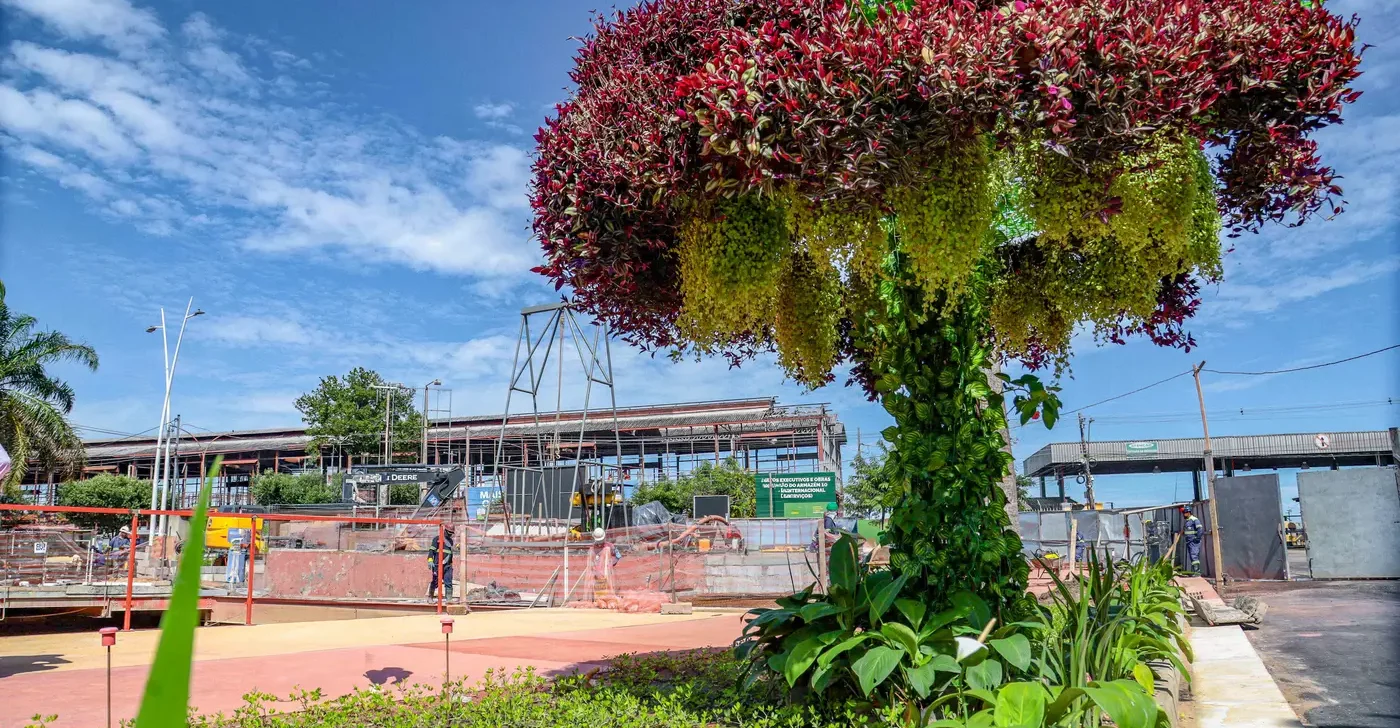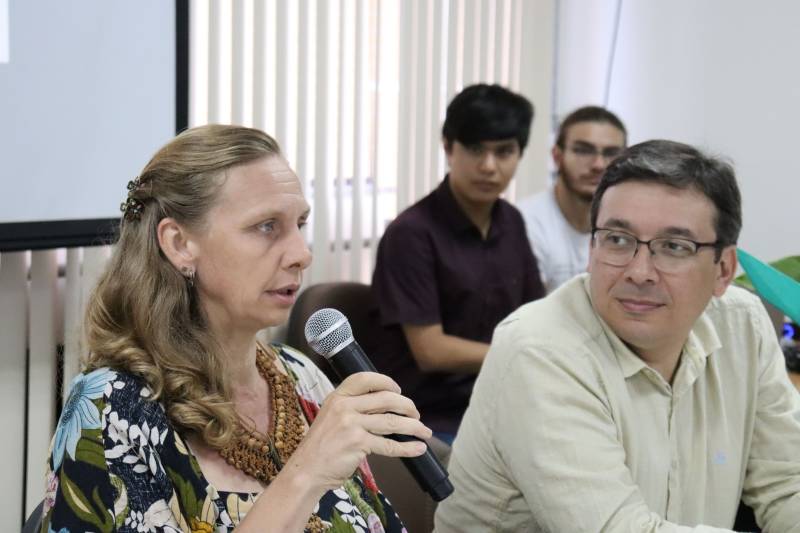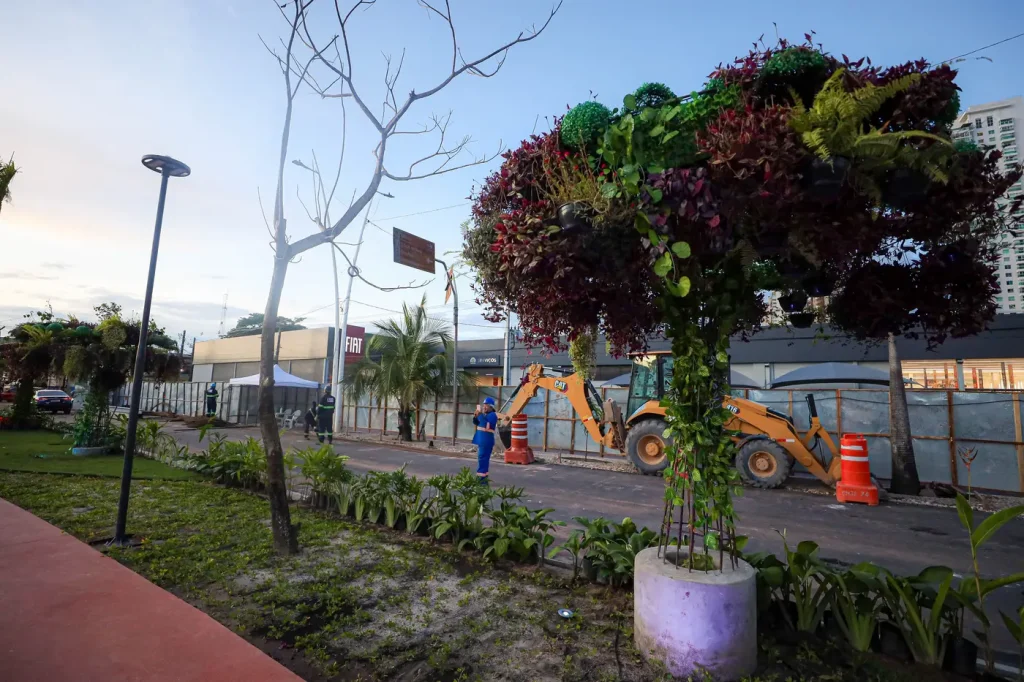COP30: Host State faces backlash over artificial trees
29 de March de 2025

By Fabyo Cruz – From Cenarium
BELÉM (PA) – Political leaders, traditional populations, and environmental specialists have criticised the Pará Government following the announcement of the installation of artificial trees in the Nova Doca Linear Park, in Belém, as part of the works for the 30th United Nations Climate Change Conference (COP30), which will take place in November this year in the capital of Pará. They point out the lack of dialogue with local communities and the need for solutions that prioritise native vegetation.
Councillor Vivi Reis (PSOL), who serves in the Belém City Council (CMB), took to social media to express her dissatisfaction with the government’s actions. For the parliamentarian, the construction of artificial trees on Doca and Tamandaré Avenue reveals the “artificiality” of Governor Helder Barbalho (MDB) regarding environmental issues. “Abroad, he delivers beautiful speeches, but here he destroys the forest, showing that his commitment to the Amazon is nothing but fake news,” she declared.
The collective “People’s COP,” composed of leaders from traditional communities organising parallel actions to COP30, also issued a public statement of repudiation. For the group, the choice of artificial structures in the heart of the Amazon demonstrates a “worrying level of disconnection with the Amazonian reality” and an affront to global environmental protection frameworks, such as the Paris Agreement and the Sustainable Development Goals (SDGs).
The collective questions the lack of transparency in the project’s costs and criticises the absence of dialogue with local communities. “The symbolism of planting artificial trees in one of the most biodiverse regions on the planet exposes not only the disregard for traditional and scientific knowledge about the Amazon biome but also the lack of listening and dialogue with local, riverside, and indigenous communities,” the statement reads.
Environmental Impacts
Speaking to CENARIUM, biologist Vânia Neu, a professor at the Federal Rural University of the Amazon (Ufra), commented on the choice of artificial trees. She explains that the rebar structures do not replace the functions of natural trees, such as the preservation of riparian forests.
The specialist also highlighted that, given the significant investment, it would be more appropriate to invest in solutions that expand the city’s green areas, use permeable pavements, and address structural issues such as the lack of basic sanitation.
“These structures are, in fact, supports made of rebar on which plants in pots will be hung. This presents several problems. Firstly, these structures do not replace trees or fulfil their functions, such as those of riparian forests, which should exist along riverbanks. Furthermore, these potted plants will need to be irrigated during dry periods. Is there an irrigation structure? If not, they will dry out and die, as small pots, like the proposed ones, do not retain water for long,” she explained.

“For COP, solutions should have been considered that would bring more green areas to the city, more permeable pavements, and, under no circumstances, promote deforestation. The works should have focused on addressing the lack of basic sanitation and the scarcity of trees in the city,” she concluded.
Government Arguments
In the announcement of the artificial tree installation, the Pará Secretariat of Public Works (Seop) argued that the “eco-trees” are made from repurposed rebar and climbing plants, providing shade in locations where natural trees could not be planted due to a lack of suitable soil.
“In the middle of the Nova Doca landscape, a structure draws attention. These are sets of trees with lush canopies, full of green leaves that, like any other vegetation, provide shade and comfort for those passing through the area – with one difference: these trees are artificial,” the government states on the Seop website.

The department highlighted that the choice of artificial trees was inspired by similar structures found in Singapore, known for providing shade and thermal comfort in dense urban areas. “The goal was to reduce urban heat islands in Belém. The road profile of Doca does not allow space for planting medium and large-sized trees,” Seop reported.
According to the Pará Secretariat of Public Work, a total of 88 eco-trees will be installed in the Nova Doca Linear Park and 100 in the Nova Tamandaré Linear Park. The government’s expectation is that the structures will help alleviate heat during the event and serve as a landscaping element for the population.

